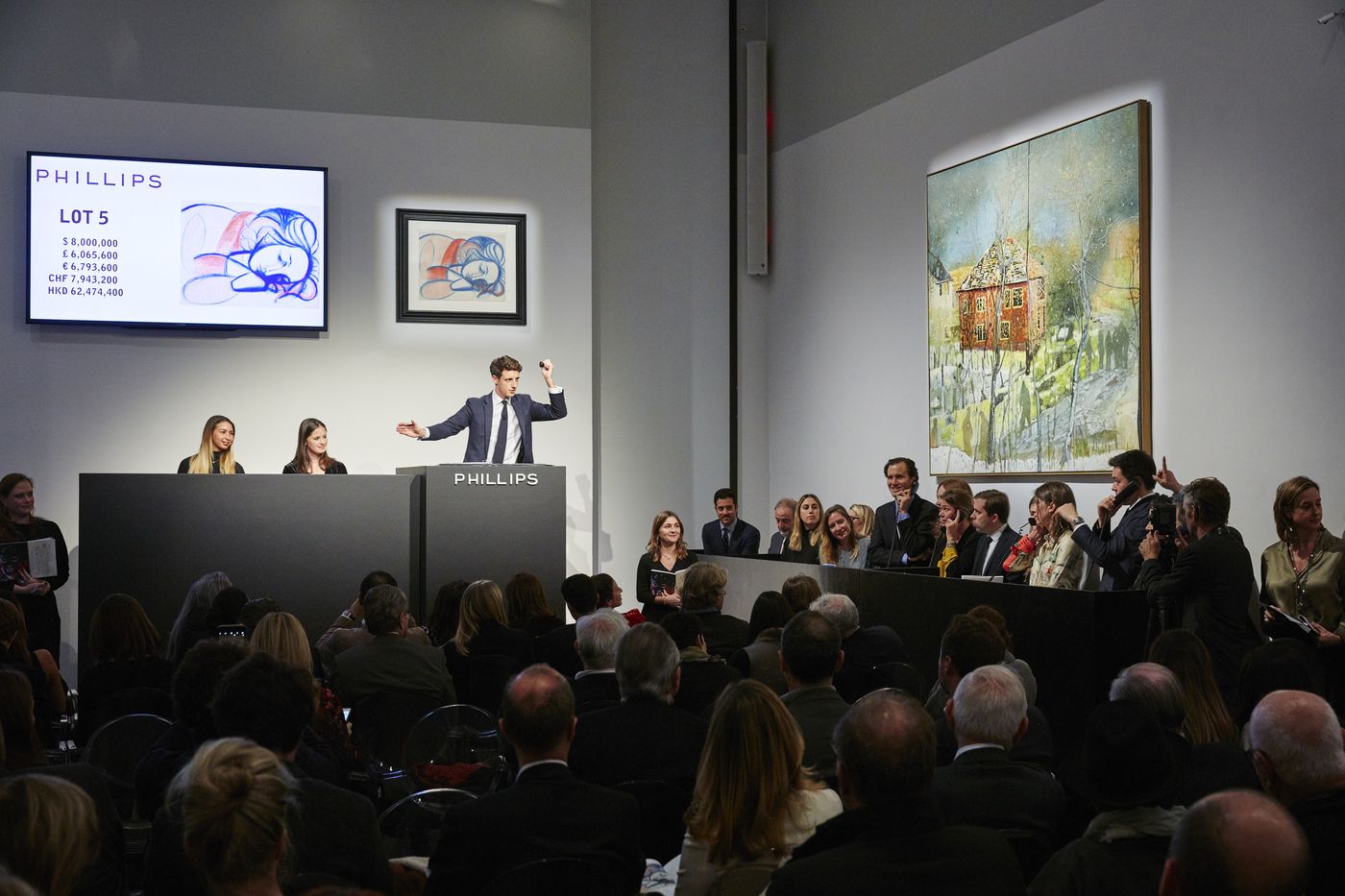In recent years, Phillips has placed an emphasis on emerging artists, with its “New Now” series devoted to early and mid-career contemporary names that have become central in the market sphere. Now, the auction house is unveiling a new digital product that will allow users to monitor up-and-comers without having to ever consult its auction results.
Working in collaboration with computer scientist and scholar, Tomasz Imielinski, Phillips has developed Articker, a proprietary data tool that tracks and scores artists based on their presence in the media. In an unusual touch for an auction house, prices are not the main point of interest on the tool. Instead, the platform seeks to provide collectors and Phillips specialists with an algorithmic representation of the industry’s top trending artists and their global networks. The product’s launch comes as houses beef up their investments in technology to continue holding a foothold in the global online marketplace, particularly during the Covid-19 pandemic.
The open-source intelligence tool, which was developed in 2014, has aggregated data on around 150,000 artists, crawling an estimated 5,000 articles from 16,000 news online sources daily for information about who is being watched most closely right now. According to Konrad Imielinski, a data scientist who acted as the tool’s co-developer, the point of Articker is to show each artist’s “slice of the media pie.” For now, Articker is mainly being used internally by employees at Phillips, but a modified version is being made available to the auction house’s clients.
In an interview, Jean-Paul Engelen, Phillips’s co-head of 20th century and contemporary art and global chairman, said that the database offers real-time analysis of which artists are holding the most sway in the cultural sector. “Typically, one has to wait until an auction has taken place to know about the price data on the secondary market for any given artist,” Engelen said. But, with Articker, now Phillips executives have the ability to track the rise of in-demand emerging artists, while also finding new ones to watch before their work enters the primary market. “In such a relatively static market with infrequent and opaque pricing data, Articker creates an alternative valuation system for artists,” Engelen continued.
“To our knowledge, it is the largest repository of non-price online data about artists,” Imielinski said in an interview. According to Engelen, the tool is designed to provide insights into an artist’s value beyond the limited scope of public auction records.
On the product, artists are ranked according to the amount of press they generate. The painter Amoako Boafo, for example, has recently become a market sensation, and Articker shows that collectors’ fervor is coinciding with the amount of headlines focused on him. A recent collaboration with Dior raised Boafo’s media profile, thanks to features that appeared in Vogue and other outlets; this, in turn, resulted in an overall rise in his Articker score. According to Articker, Boafo—who has seen a 152 percent increase in his media share in the past three months—is outpacing his peers by a long shot.
Picasso, who is perhaps the leading global artist brand worldwide, comprises 2 percent of the global media share in the database. Big-name artists like Marina Ambramović and Gerhard Richter trend highly on Articker’s Insights page, which is not surprising—both artists have long dominated the press and, to a certain degree, the market. But Articker’s primary value is in allowing users to foresee which artists are soon to have a moment.
“If a young artist has an incredible M.F.A. exhibition, we now have a robust view on the media attention they are getting well before they even have gallery representation,” Engelen said. Accordingly, the developers of Articker have paid special attention to artists coming out of the Yale School of Art and other top art schools in the United States.
Pressure to deliver the next big thing to the market drives the tool’s imperative. For Phillips executives, the intelligence tool helps alleviate the burden of having to employ specialists to source cutting-edge contemporary talent on a global scale, while also enabling employees at the house to keep tabs on those with recently established secondary markets.
As the online marketplace expands, international art firms are investing in digital initiatives to serve both internal and client needs. “Since becoming CEO of Phillips in July 2014, I’ve prioritized a digital-first strategy for the company,” said Edward Dolman, Phillips CEO, in a statement, adding that Articker is meant to “democratize” access to information on artists. “I see it as a critical development for our increasingly digital world, particularly in our current climate.”



Phillips is adapting to the new times..